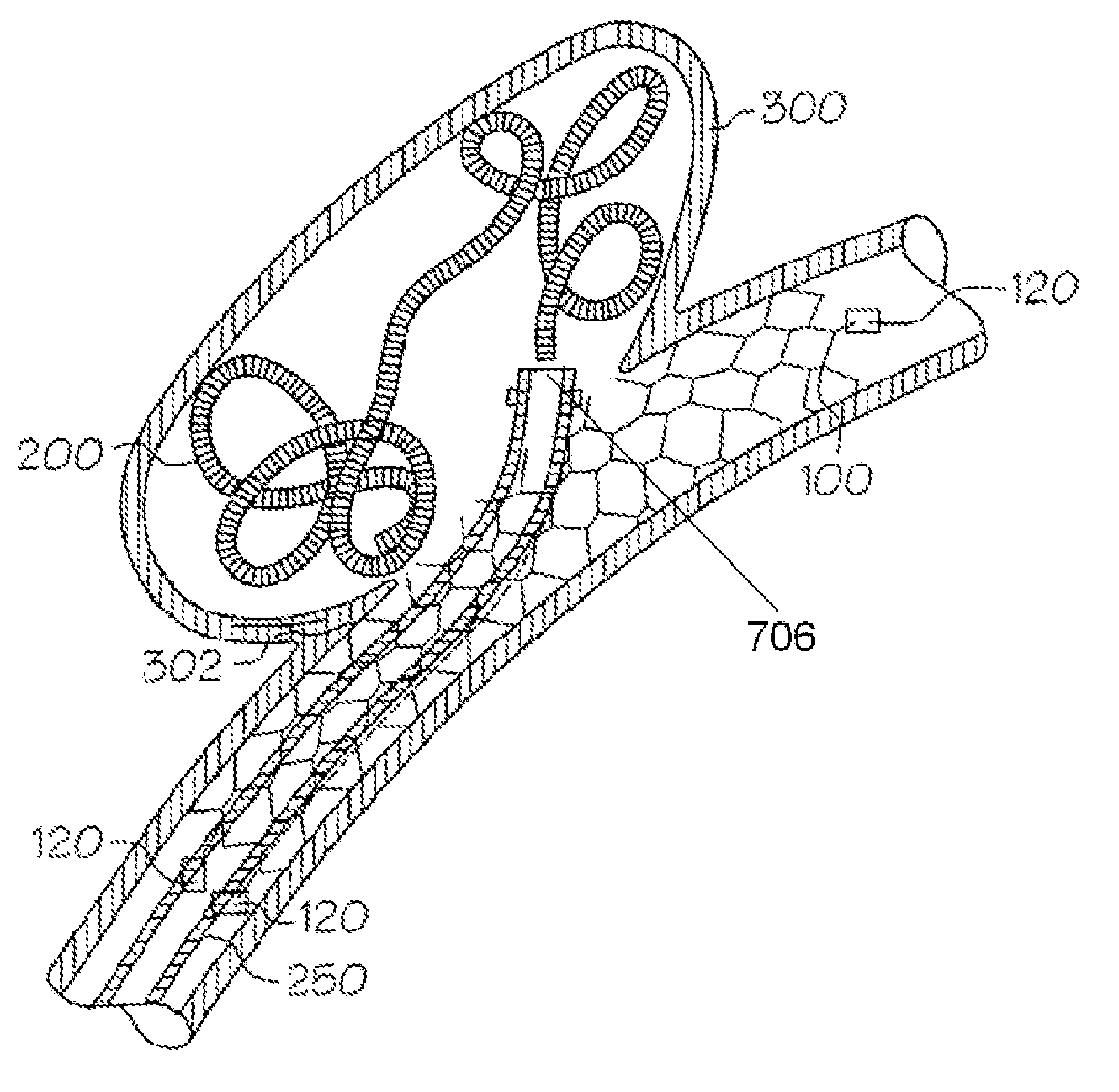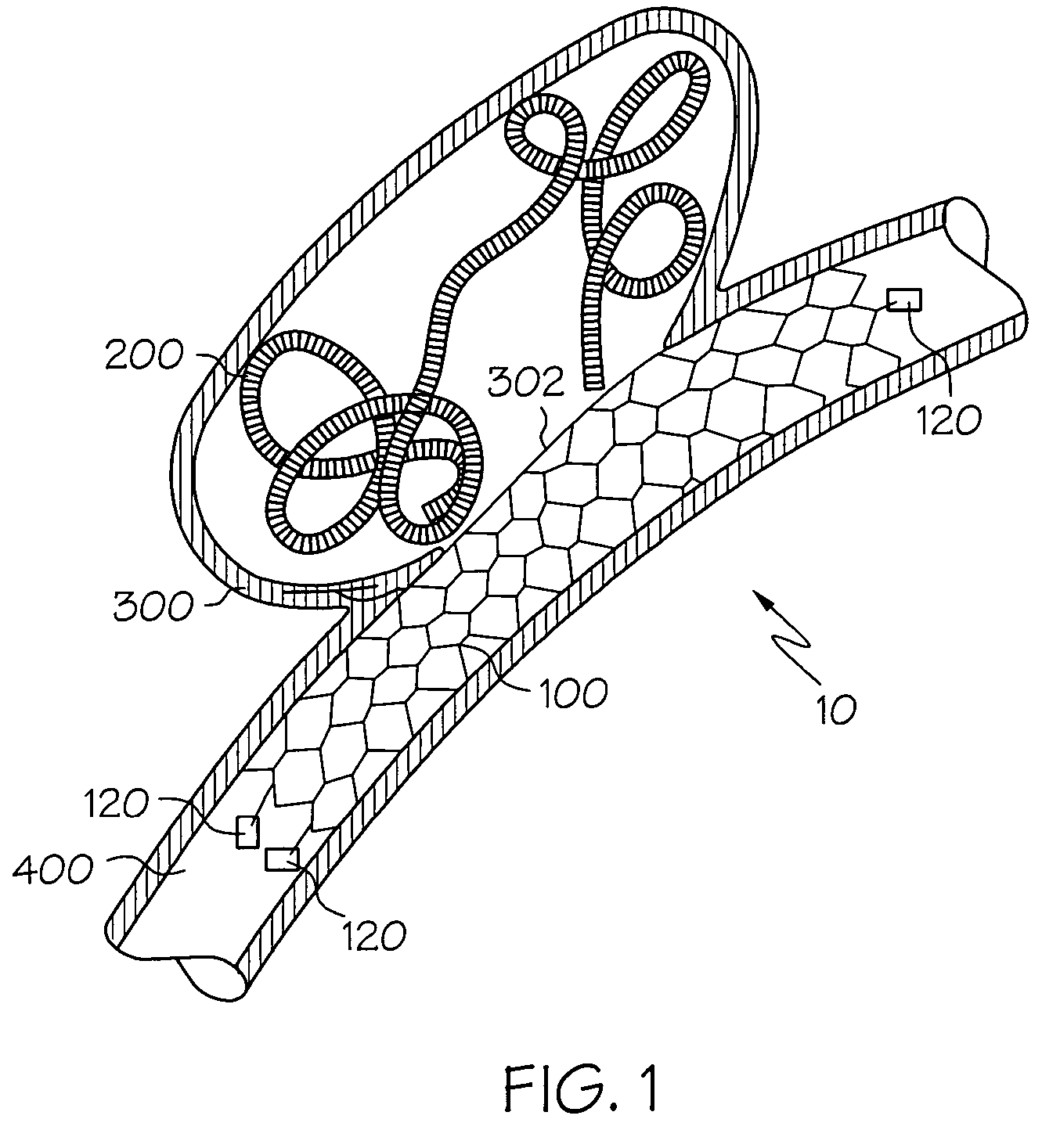Sacrificial anode stent system
a stent and anode technology, applied in the field of vascular defects non-invasive treatment, can solve the problems of hemorrhagic stroke, small tolerance of brain areas, intrusive invasion into the body,
- Summary
- Abstract
- Description
- Claims
- Application Information
AI Technical Summary
Benefits of technology
Problems solved by technology
Method used
Image
Examples
Embodiment Construction
While this invention may be embodied in many different forms, there are described in detail herein specific preferred embodiments of the invention. This description is an exemplification of the principles of the invention and is not intended to limit the invention to the particular embodiments illustrated.
For the purposes of this disclosure, unless otherwise indicated, identical reference numerals used in different Figures refer to the same component.
The sacrificial anode stent system 10 generally includes a vascular support structure in the form of a stent 100. Non-limiting examples of stent which may be used in the instant invention are disclosed in U.S. patent application Ser. No. 09 / 957,983 which is incorporated herein by reference in its entirety. The sacrificial anode stent system 10 also generally utilizes a vaso-occlusive device such as a platinum coil 200 for positioning in a wide-neck aneurysm 300 as more fully described in U.S. Pat. Nos. 5,423,829; 5,643,254; 6,059,779; a...
PUM
 Login to View More
Login to View More Abstract
Description
Claims
Application Information
 Login to View More
Login to View More - R&D
- Intellectual Property
- Life Sciences
- Materials
- Tech Scout
- Unparalleled Data Quality
- Higher Quality Content
- 60% Fewer Hallucinations
Browse by: Latest US Patents, China's latest patents, Technical Efficacy Thesaurus, Application Domain, Technology Topic, Popular Technical Reports.
© 2025 PatSnap. All rights reserved.Legal|Privacy policy|Modern Slavery Act Transparency Statement|Sitemap|About US| Contact US: help@patsnap.com



